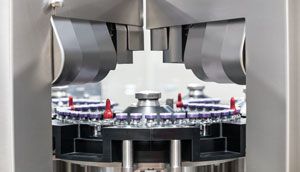Testing the Integrity of Lyophilized Product Containers
Non-destructive container closure integrity testing allows 100% inspection of all ampoules, syringes, vials, and cartridges.
Many new parenteral products, such as in-vitro diagnostics, anti-infectives, or biotechnology-derived products, are freeze-dried-a complex process involving several distinct steps and applicable to different packaging types. To maintain the highest product and patient safety, container closure integrity (CCI) testing of lyophilized products is gaining importance.
The United States Pharmacopeia (USP) has recently revised USP General Chapter <1207> (1), with the aim of listing the different CCI methods available and identifying the most appropriate ones for consistent product and patient safety. For instance, deterministic tests are quantitative and less subject to (human) error than probabilistic methods. Wherever expensive products are involved, non-destructive technologies are preferred to destructive ones.
No regulator, however, will issue a recommendation for a single technology. Every product and manufacturing process requires a careful evaluation of the available methods and might even lead to the use of more than one technology for different stages.
Paving the way for 100% CCI
Regulations will need to be extended beyond their current scope to take new packaging formats and formulations into consideration. It is not only ampoules that are prone to sterility breaches or leakage. Syringes, vials, and cartridges may experience breaches, and these containers are very demanding in terms of CCI. A vial, for instance, consists of a glass container, a stopper, and a cap, thus involving more potential risks. The lyophilization process also covers several separate steps. As a result, both product and container-closure system need to be thoroughly inspected at all levels.
Improperly seated stoppers or applied caps, fibers on the lip, or bad stopper-vial connections can lead to seal issues. Rough handling, improper machine setup, or cracks in the glass might also result in leakage. In fact, identical CCI rejection rates have been recorded for freeze-dried vials and ampoules. To date, 100% CCI is only mandatory for ampoules, but not for other containers. However, it is expected that regulations will soon be changed accordingly.
Changing use of methods
While the USP revision does not stipulate entirely new technologies, it will significantly change the way the industry evaluates and uses existing methods. The non-destructive vacuum/pressure decay method, for example, enables the identification of package leaks by capturing the pressure rise or decay resulting from headspace leakage or product evaporation.
Figure 1. The KHS series offers automated headspace leak detection. Figure is courtesy of Bosch Packaging Technology.

Headspace analysis (HSA) is also applicable to lyophilized products and medicines filled under vacuum or purged with gas. This method measures the quantity of light passing through the headspace via laser spectroscopy, and monitors changes in headspace gas composition or total headspace pressure (see Figure 1).
To select the appropriate testing method for each product and container, a thorough understanding of the product is paramount. By carefully selecting the respective technologies, pharmaceutical manufacturers and equipment providers can together find the most appropriate solution in line with regulatory compliance.
Reference
- USP, USP General Chapter <1207>, “Sterile Product Packaging-Integrity Evaluation,” USP 39-NF 34 (US Pharmacopeial Convention, Rockville, MD, Feb. 1, 2016).
About the author
Mahmoud Hamada is business development manager of Inspection Technology for Bosch Packaging Technology, tel. +49.7951.402.1620, Mahmoud.Hamada@de.bosch.com.
Pharmaceutical Tariffs Are Imminent: How Industry is Bracing for Impact
April 16th 2025On April 14, 2025, the Trump Administration launched a national security-driven investigation into pharmaceuticals, a move that will likely result in tariffs being placed on pharmaceutical drugs, ingredients, and other components that are imported from outside of the United States.